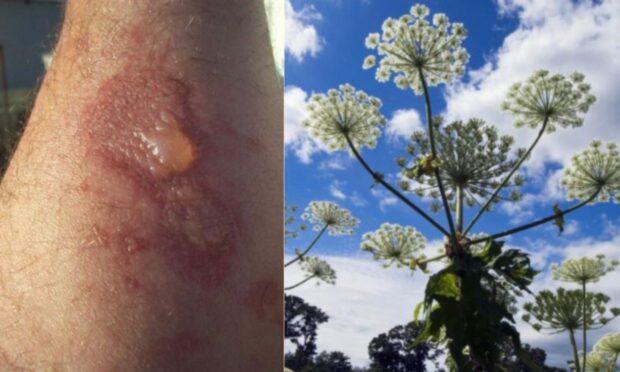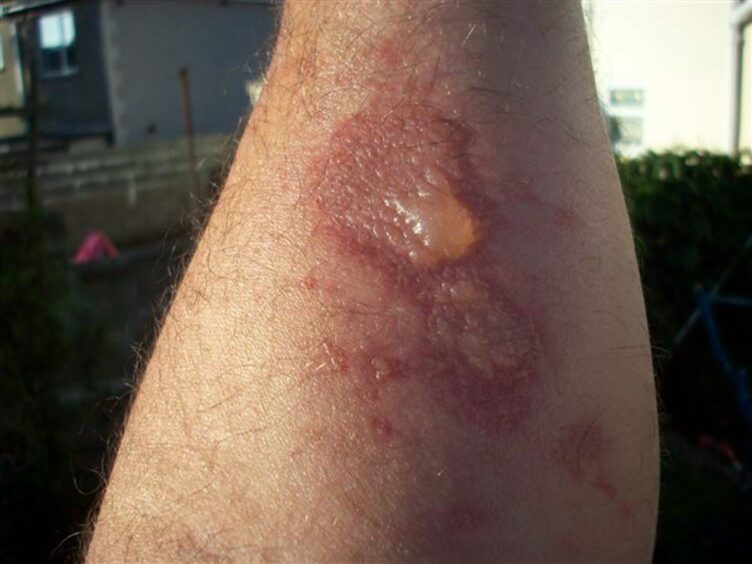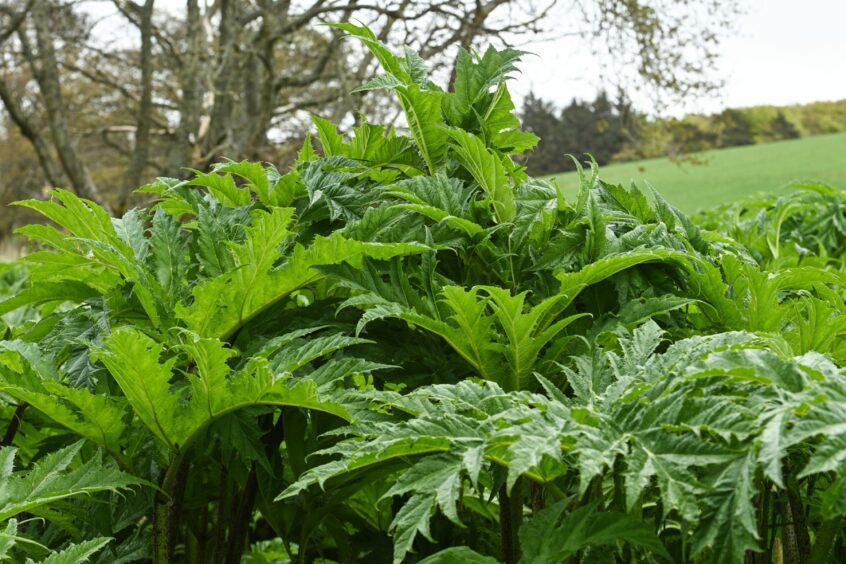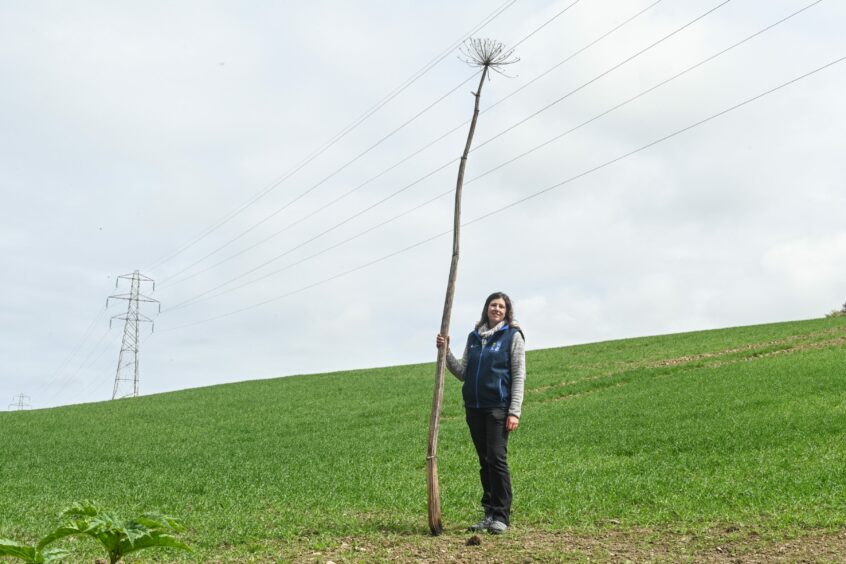People across Scotland are being warned about a toxic plant that can cause severe skin blisters, burns and blindness.
NatureScot has highlighted the need for people to be able to identify giant hogweed, particularly ahead of the school summer holidays, when people are most likely to be exploring the outdoors.
Giant hogweed sap contains a toxic chemical which makes skin incredibly sensitive to sunlight and causes severe blisters.
It can result in burns which can be serious and long lasting, with gardeners, walkers, children and pets being hurt every year by the plant.
How to recognise giant hogweed
It’s an impressive-looking plant which can grow to five metres in height and is usually found along river banks, on waste ground and beside roads and train tracks.
NatureScot’s Invasive Species Policy Manager Stan Whitaker said: “It’s really important for people to be able to recognise giant hogweed so they can avoid potentially serious injury.
“Thankfully the plant is relatively easy to identify when fully grown due to its enormous size of between two and four metres tall, with large white clusters of flowers up to 80 centimetres wide.
“Its leaves are very large and sharply divided and can be over one metre across while the stems are green with purple blotches and covered with bristly hairs.”
The species of plant is not native to Scotland but due to its impressive height, it was originally brought into the country to be planted in ornamental gardens.
However a single giant hogweed plant can produce thousands of seeds and it soon escaped and has since quickly spread throughout the country.
Mr Whitaker continued: “As well as being a health risk to people and animals, giant hogweed is also a risk to our environment because it forms dense patches which crowd out our native plants.
“It can be very tricky to eradicate, because each plant produces over 20,000 seeds, which can live in the soil for up to five years, so land owners need to take a long-term approach to removing it every year, before it flowers.”
What to do if you touch the toxic sap?
Treating a hogweed burn can be tricky as people usually come into contact with it when they are out and about with no first aid facilities nearby.
The best thing to do to is cover the affected area and thoroughly wash it with soap and water as soon as you can.
Eleanor Robertson, a senior clinical research fellow at the NHS said the best thing to do is steer well clear of the plant altogether.
“If you do come in to contact with the plant, you must cover the affected area to block sunlight then thoroughly wash the area to remove the sap,” she said.
“Should redness or blistering occur, you should seek medical help.”
Dog walkers are also being urged to keep their pets away from giant hogweed, as it is harmful to animals as well as humans.
The owner of the land on which giant hogweed is present has responsibility for the plant, though there is no legal requirement to control it.
In Macduff, there is an interesting experiment underway using a flock of sheep to fight this poisonous plant.
Anyone who spots giant hogweed growing on amenity land, such as parks, playing fields, footpaths or road verges, should report it to the local authority.




Conversation